Hiroshi Ogawa and Hirofumi Sugimoto
Abstract: In the evening of August 31, 2021, an unusual activity has been observed by worldwide radio meteor observations. It seems that this was caused by the Aurigid 2021 outburst which had been predicted by several researchers. The outburst occurred at λʘ = 158.39° (August 31, 21h UT). The Activity Level Index (AL) was AL = 1.1 ± 0.3. This corresponds to a ZHRr = 55 ± 19. In a more detailed activity profile using every 10-minute counts, the Aurigid peak was estimated to occur at λʘ = 158.402° (August 31, 21h45m UT) with a ZHRr = 85 ± 27. This unusual activity was of a very short duration for about one hour. Besides, a lot of Long Echoes were observed during the period of λʘ = 158.38° – 158.41° (August 31, 21h10m–22h00m UT).
1 Introduction
With Radio Meteor Observations it is possible to observe meteor activity continuously even during bad weather or daytime. Besides, the radiant elevation problem is solved by organizing a worldwide project. One of worldwide projects is the International Project for Radio Meteor Observations (IPRMO). IPRMO uses the Activity Level Index for analyzing the meteor shower activity (Ogawa et al., 2001).
The Aurigids (AUR#00206) have produced outbursts in 1935, 1986, 1994, 2007 and 2019. On September 1, 2007, the outburst peak occurred at λʘ = 158.556° with a ZHR = 132 ± 26 (Rendtel, 2007). The Aurigids 2019 displayed a peak ZHR = 65 ± 12 at λʘ = 157.918° (Rendtel et al., 2020). Radio Meteor Observations sometimes caught weak activity during the interval λʘ = 158°–159°. The traditional peak occurred around September 1 (λʘ = 158.6°). Since the Aurigid meteor shower has a very fast geocentric velocity of 66 km/s, we should keep the height ceiling effect in mind in the case of radio meteor observation.
Sato M., Lyytinen E. and Vaubaillon J. published the prediction of an extra peak expected in 2021 around λʘ = 158.3°–158.4° (August 31, 21h–22h UT) (Rendtel, 2020). The best location with best conditions was located in Asia. Many Japanese radio observers prepared for this possibility. Since it was daytime around the predicted peak time (September 1, 6h00m–7h00m Local Time), radio meteor observations were the best method for this observation.
2 Method
This research adopted two methods for estimating the Aurigid meteor shower activity. One is the Activity Level Index which is being used by IPRMO (Ogawa et al., 2001). This index has been used in many studies of meteor showers (Ogawa and Steyaert, 2017). The structure of the meteor activity profile was estimated by using the Lorentz profile (Jenniskens et al., 2000).
Another method is the estimated ZHRr (Sugimoto, 2017). This index is obtained by using the Activity Level Index and a factor named Sbas which translates to ZHRr. This method is very useful in order to compare the radio data with visual observations.
3 Results
3.1 Activity Level Index
Figure 1 shows the result for the Aurigids in 2021 based on the calculation of the Activity Level Index using 39 observing entries from 13 countries. There was no unusual activity until λʘ = 158.35° (August 31, 20h UT). The unusual activity started suddenly. The peak occurred at λʘ = 158.39° (August 31, 21h UT) with an Activity Level Index = 1.1±0.3. The high activity level lasted less than one hour. The activity level went back to the normal level at λʘ = 158.5° (September 1, 0h UT).
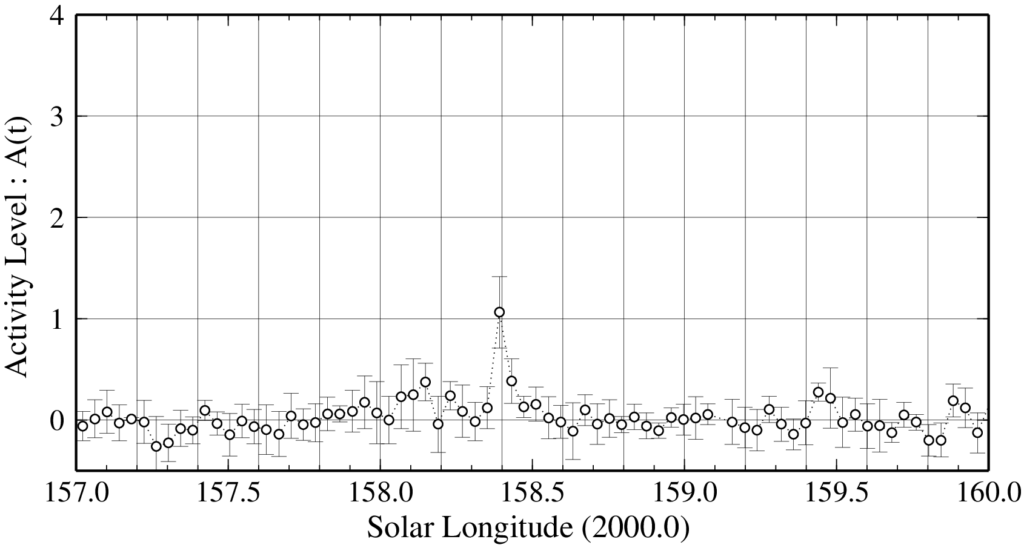
Figure 1 – The Activity Level Index for the Aurigids 2021.
3.2 Estimated ZHR_r
Figure 2 shows the result for the Aurigids in 2021 according to the calculation of the ZHRr-values based on 39 observing reports from 12 countries. The activity began at λʘ = 158.31° (August 31, 19h UT). From λʘ = 158.35° (August 31, 20h UT), the activity increased rapidly. The peak was over at λʘ = 158.39° (August 31, 21h UT).
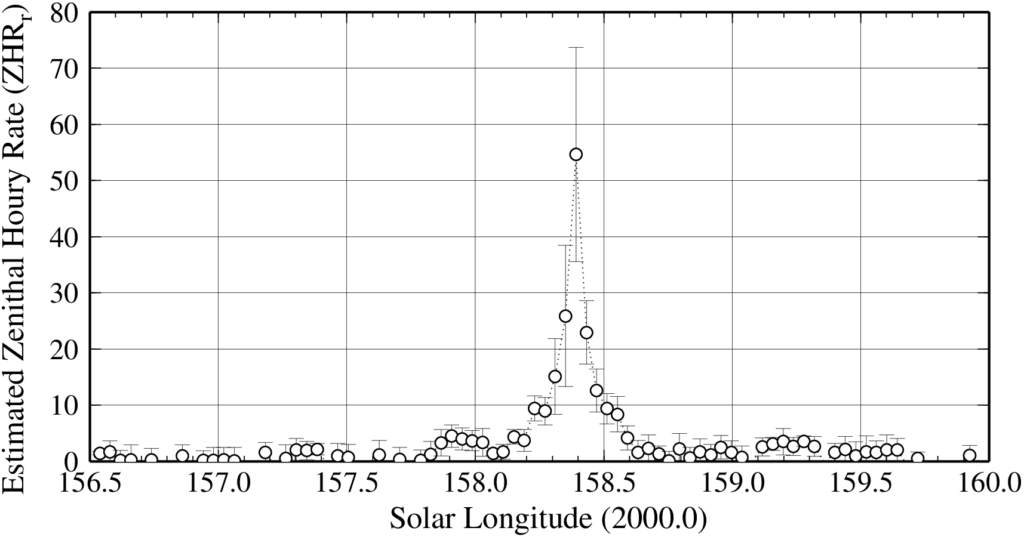
Figure 2 – The estimated ZHRr of the Aurigids 2021.
Table 1 – The Activity Level Index (AL) and the estimated ZHRr of the Aurigids 2021.
| Time (UT) | λʘ | Activity Level | ZHRr | |||
| N | AL | N | ZHRr | |||
| Aug 31, 17h | 158.230° | 8 | 0.2 ± 0.1 | 6 | 9 ± 2 | |
| Aug 31, 18h | 158.271° | 11 | 0.0 ± 0.3 | 6 | 9 ± 2 | |
| Aug 31, 19h | 158.311° | 9 | –0.0 ± 0.2 | 6 | 15 ± 7 | |
| Aug 31, 20h | 158.351° | 9 | 0.1 ± 0.2 | 4 | 26 ± 13 | |
| Aug 31, 21h | 158.391° | 6 | 1.1 ± 0.3 | 12 | 55 ± 19 | |
| Aug 31, 22h | 158.432° | 7 | 0.4 ± 0.2 | 6 | 23 ± 6 | |
| Aug 31, 23h | 158.472° | 7 | 0.1 ± 0.1 | 4 | 13 ± 4 | |
| Sep 1, 00h | 158.512° | 15 | 0.2 ± 0.2 | 7 | 9 ± 3 | |
| Sep 1, 01h | 158.553° | 13 | 0.0 ± 0.2 | 10 | 8 ± 3 | |
Figure 3 shows a more detail Aurigids activity using Japanese radio observers every 10-minutes counts. The high activity was seen only about 30 minutes during for the period of λʘ = 158.388°–158.402° (August 31, 20h20m – 20h50m UT) with over ZHRr = 60. The peak was over at λʘ = 158.402° (August 31, 21h45m UT). The ascending branch was wider than the descending branch. The full width of half maximum (FWHM) = –0.025° / +0.020° (about –40 minutes /+30 minutes) was determined by using the Lorentz activity profile.
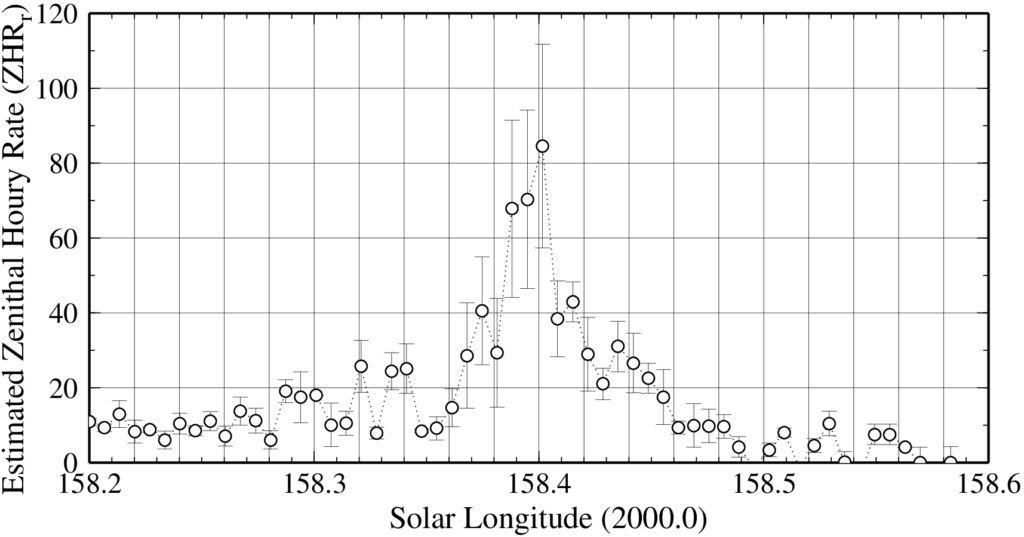
Figure 3 – A more detailed ZHRr profile for the Aurigids using the Japanese radio meteor observers.
3.3 Long duration echoes
Strong overdense meteor echoes called “long echoes” have been often observed. A long echo of more than 60 seconds is recorded every now and then. Although there are a lot of long echoes observed during the activity period of major meteor showers, there are only few long echoes at the end of August and begin of September during ordinary years.
Figure 4 shows a comparison of the number of long echoes for some days in 2021 compared to past years as recorded by Japanese observing stations. Each echo lasting more than 20 seconds or longer is defined as a long echo. The number of long echoes in 2021 was six times higher than in previous year.

Figure 4 – A comparison of the number of long echoes for some days in 2021 compared to past years as recorded by Japanese observing stations. (Circles represent the average for the period of 2016–2020).
Moreover, most of the long echoes have been observed during the period of Aug. 31, 18h – 23h UT. Figure 5 shows the estimated ZHRr for the long echoes around the time of the peak activity. A lot of long echoes were seen during the period of λʘ = 158.30° – 158.45° (August 31, 19h – 22h UT). On the other hand, however, there was no unusual activity before or after this period.

Figure 5 – The estimated ZHRr for the long duration echoes.
Figure 6 shows some images of a number of observed long echoes including some obtained the days before and after the peak at the Shibukawa observing stations using 89.4MHz (by Masaki Kano, Japan). The days before and after the peak, there were few long echoes. On the other hand, there were a lot of long echoes on August 31.
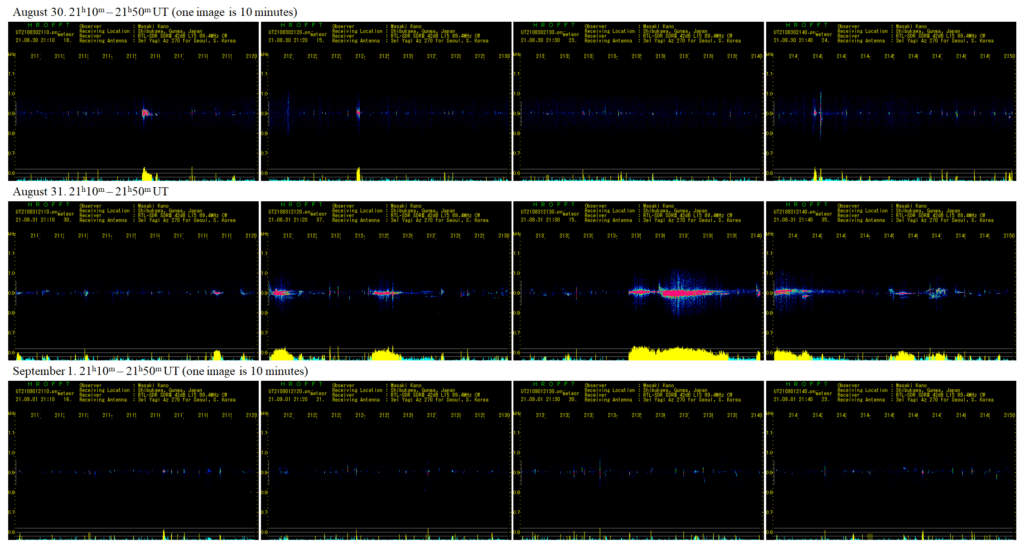
Figure 6 – Several long duration echoes recorded during the period of 21h10m–21h50m (UT) at the Shibukawa observing stations (by Masaki Kano, Japan) using 89.4MHz. (up: August 30, middle: August 31, bottom: September 1).
Acknowledgment
The worldwide data were provided by the Radio Meteor Observation Bulletin (RMOB). The following observers provided the data:
Chris Steyaert (Belgium), Felix Verbelen (Belgium), Johan Coussens (Belgium), FLZ-R0 (Czech Republic), DanielD SAT01_DD (France), Jacques Molne (France), Jean Marie F5CMQ (France), WHS Essen (Germany), Balogh Laszlo (Hungary), Istvan Tepliczky (Hungary), AAV Planetario di Venezia (Italy), GAML Osservatorio Astronomico Gorga (Italy), Mario Bombardini (Italy), Hirofumi Sugimoto (Japan), Hironobu Shida (Japan), Hiroshi Ogawa (Japan), Hirotaka Otsuka (Japan), Kenji Fujito (Japan), Masaki Kano (Japan), Masaki Tsuboi (Japan), Nobuo Katsura (Japan), Tomohiro Nakamura (Japan), Yumari (Japan), Juan Zapata (Mexico), Rainer Ehlert (Mexico), Salvador Aguirre (Mexico), Kees Meteor (Netherlands), Karlovsky Hlohovec Observatory (Slovakia), Orlando Benitez Sanchez (Spain), Jochen Richert (Switzerland), Ian Evans (United Kingdom), Philip Norton (United Kingdom), Philip Rourke (United Kingdom), Simon Holbeche (United Kingdom), Eric Smestad_KC0RDD (United States of America), Stan Nelson (United States of America).
References
Jenniskens P., Crawford C., Butow S. J., Nugent D., Koop M., Holman D., Houston J., Jobse K., Kronk G., and Beatty K. (2000). “Lorentz shaped comet dust trail cross section from new hybrid visual and video meteor counting technique implications for future Leonid storm encounters”. Earth, Moon and Planets, 82–83, 191–208.
Ogawa H., Toyomasu S., Ohnishi K., and Maegawa K. (2001). “The Global Monitor of Meteor Streams by Radio Meteor Observation all over the world”. In, Warmbein Barbara, editor, Proceeding of the Meteoroids 2001 Conference, 6-10 August 2001, Swedish Institute of Space Physics, Kiruna, Sweden. ESA Publications Division, European Space Agency, Noordwijk, The Netherlands, 189–191.
Ogawa H. and Steyaert C. (2017). “Major and Daytime Meteor Showers using Global Radio Meteor Observations covering the period 2001–2016”. WGN, Journal of the International Meteor Organization, 45, 98–106.
Rendtel J. (2007). “Visual observations of the Aurigid peak on 2007 September 1”. WGN, Journal of the International Meteor Organization, 35, 108–112.
Rendtel J., Lyytinen E. and Vaubaillon J. (2020). “Enhanced activity of the Aurigids 2019 and predictions for 2021”. WGN, Journal of the International Meteor Organization, 48, 158–162.
Rendtel J. (2020). “2021 Meteor Shower Calendar”. International Meteor Organization.
Sugimoto H. (2017). “The New Method of Estimating ZHR using Radio Meteor Observations”. eMetN, 2, 109–110.

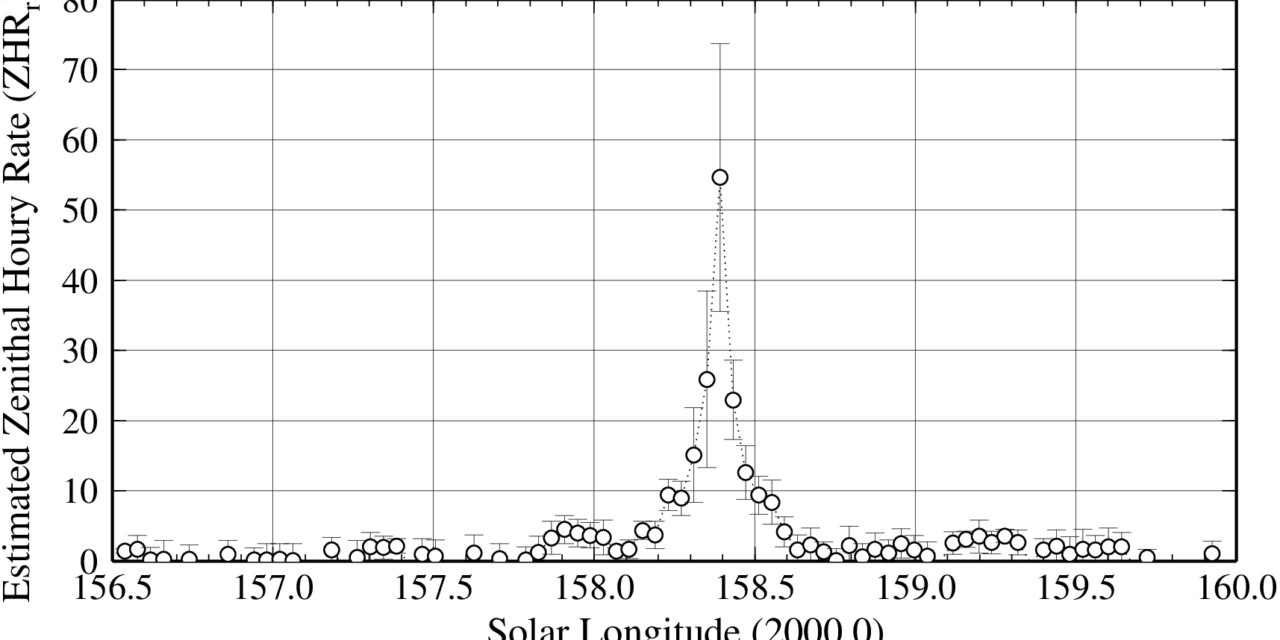

Hello – What software do you use to produce the images in Figure 6?
Hello, their observed images were produced by HROFFT software. It is very useful software and many observers use.
You can see more information as following:
HROFFT instructions:
https://www.iprmo.org/about-hro/hro2-e.html